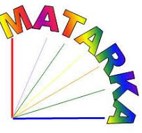A BISEL program alkalmazása a középiskolában a természet védelméért
Absztrakt
A BISEL országos környezetvédelmi akcióprogramban a mintegy 70 középiskola mellett számos civil szervezet és nemzeti parkok által szervezett oktatási központok is aktívan részt vesznek. Ezekben az intézményekben olyan diákcsoportok szerveződtek, amelyek szaktanárok, ill. oktatók vezetésével közeli patakon, vagy folyón végeznek rendszeres ökológiai állapotfelméréseket. A biológiai vizsgálatok alapján meghatározott biotikus index (BI) a vízfolyások vízminősítésének eszköze. A módszer lehetővé teszi, hogy képet kapjunk a vízfolyások ökológiai állapotáról. Az edelényi Izsó Miklós Gimnázium a Bódva folyón végzi vizsgálatait. Felméréseink alapján kapott vízminőségi értékeinket egy szabványos táblázatban rögzített indexek alapján kapjuk meg. Munkánk során megállapítottuk, hogy a program sikeresen alkalmazható mind tudományos, mind környezettudatos nevelési szempontból az oktatásban, hiszem a BI értékek által kapott tudományos eredmények alkalmasak a vízminőség meghatározásra, valamint a diákcsoportok lelkesen vettek részt a felmérésekben.
A program szélesebb körben való megismertetése jó lehetőséget teremthet a természettudományos tárgyak hatékonyabb, gyakorlati szempontú oktatásához, valamint adatokat szolgáltathat a természetvédelem számára is.
Hivatkozások
Borián, Gy., Boros, S., Hartner, A. & Vér, A. (2001): Vízbiológiai praktikum. – Agrárszakoktatási Intézet, Budapest.
Borián, Gy. (2002): Tanári segédlet a „Bioindikáció az iskolai oktatásban” környezetvédelmi országos akcióprogramhoz. – Környezetvédelmi Minisztérium, Budapest 18 pp.
Csobod, É. & Varga, A. (2004): Fenntartható közösségek és iskolafejlesztés. Innováció a tanárképzésben, az akciókutatás és a környezeti nevelés lehetőségei. – Országos Közoktatási Intézet, Regionális Környezetvédelmi Központ. Budapest.
De Pauw, N. & Vanhooren, G. (1983): Method for biological quality assessment of watercourses in Belgium. – Hydrobiol. 100: 153--168.
Gabriels, W., Goethals, P. L. M. & De Pauw, N. (2005): Implications of taxonomic odifications and alien species on biological water quality assessment as exemplified by the Belgian Biotic Index method. – Hydrobiol. 542: 137--150.
Havas, P. (1993): Érték és értékátadás a környezeti nevelésben, Iskolakultúra. – Természet-tudomány 9: 3--15.
Hines, J. M., Hungerford, H. R. & Tomera, A. N. (1987): Analysis and synthesis of research on responsible environmental behavior: a meta-analysis . – J. Environ. Edu. 18: 1-8.
Iozzi, L. A. (1984): A Summary of Research in Environmental Education, 1971-1982: The Second Report of the North American Association for Environmental Education‘ s Comission on EE Research. – ERIC/SMEAC, Columbus, Ohio.
Juhász-Nagy, P. (1986): Egy operatív ökológia hiánya, szükséglete és feladatai. – Akadémiai Kiadó, Budapest. p. 125.
Kriska, Gy. (2003): Az édesvizek és védelmük. – Műszaki könyvkiadó, Budapest, p. 116.
Bervoets, L., Bruylants, B., Marquet, P., Vanelannoote, A. & Verheyen, R. (1989): A proposal for modification of the Belgian biotic index method. – Hydrobiol. 179: 223-228.
Németh, J. (1998): A biológiai vízminősítés módszerei. Vízi természet- és környezetvédelem. Környezetgazdálkodási Intézet, Budapest, p. 148.
Victor, A. (1991): Környezeti nevelés és a biológia tanítása hazánkban. – IUCN Magyarországi Nevelési Bizottsága Kiadása.
www.bisel.hu: Bioindikáció az iskolai oktatásban.






